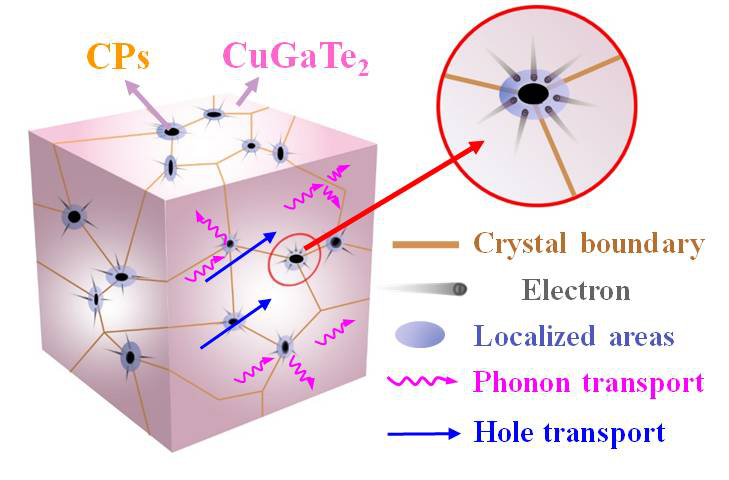
Chinese researchers announced that they had achieved high thermoelectric performance of CuGaTe2 by introducing of carbon particles (CPs) due to simultaneously optimizing of the electrical and thermal transport properties.
This work was done by QIN Xiaoying and his team at Institute of Solid State Physics, Hefei Institutes of Physical Science. And the maximum ZT of ~1.0 was obtained at 873 K for CuGaTe2+0.5 wt.% CPs sample in this study.
Thermoelectric (TE) conversion technology, an environmentally friendly method to generate power in the form of electricity from waste heat, has absorbed widespread attentions during the critical period of the growing energy crisis and global climate problems in recent years.
However, large-scale commercial application for thermoelectric applications is critically limited due to the relatively low conversion efficiency of materials.
Recently, CuGaTe2 based chalcopyrite TE materials have absorbed many research interest due to its high power factor. Through this study, the results demonstrated that CPs were quite beneficial to optimizing the thermoelectric and mechanic properties.
In the study, the team observed that as electron-localization centers (Figure 1), the introduced carbon particles could enhance their electrical conductivity and then power factor by using adjusting the electrical transport properties.
Moreover, the interfaces between carbon particles and matrix could strongly scatter the heat carrying phonons and suppress thermal conductivity, leading to ~41% decrease in lattice thermal conductivity at 873 K. As a result, the highest ZT value (~1.0@873 K) was obtained for CuGaTe2+0.5 wt.% CPs, which was ~28% larger than that of pure CuGaTe2 (Figure 2).
In addition, the softer carbon particles could simultaneously optimize the hardness and fracture toughness of the composites, which was beneficial to processing technic of thermoelectric device. The hardness decreased from 4.45 to 3.82 GPa and the fracture toughness increased from 0.80 to 1.10 MPa·m1/2 after introducing 0.5 wt.% CPs into CuGaTe2 matrix, respectively (Figure 3).
According to the study, all results indicated that the incorporation of carbon particles was a very promising approach for CuGaTe2 to improve the thermoelectric and mechanical properties.
This research work was supported by the National Natural Science Foundation of China.

Schematic diagram illustrating various phonon scattering mechanisms and electron localized region near CPs within CuGaTe2+ x wt.% CPs sample. (Image by HUANG Lulu)

Temperature-dependent of (a) figure of merit (ZT) of CuGaTe2+x wt.% CPs (x= 0, 0.3, 0.5, 1) specimens, along with a comparison (b) to the maximum ZT reported in similar materials. (Image by HUANG Lulu)

Mechanical properties mapping of CuGaTe2+x wt.% CPs (x= 0, 0.3, 0.5, 1) specimens. 3D contour map of hardness for (a) CuGaTe2 and (b) CuGaTe2+0.5 wt.% CPs bulk. (Image by HUANG Lulu)

86-10-68597521 (day)
86-10-68597289 (night)

52 Sanlihe Rd., Xicheng District,
Beijing, China (100864)

